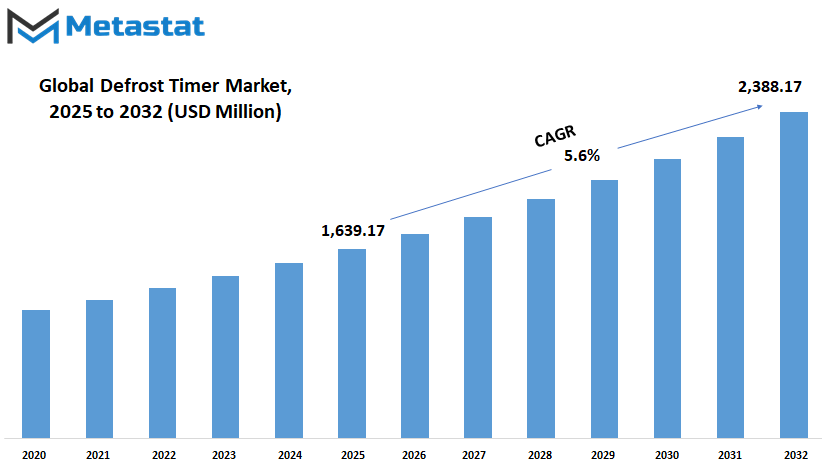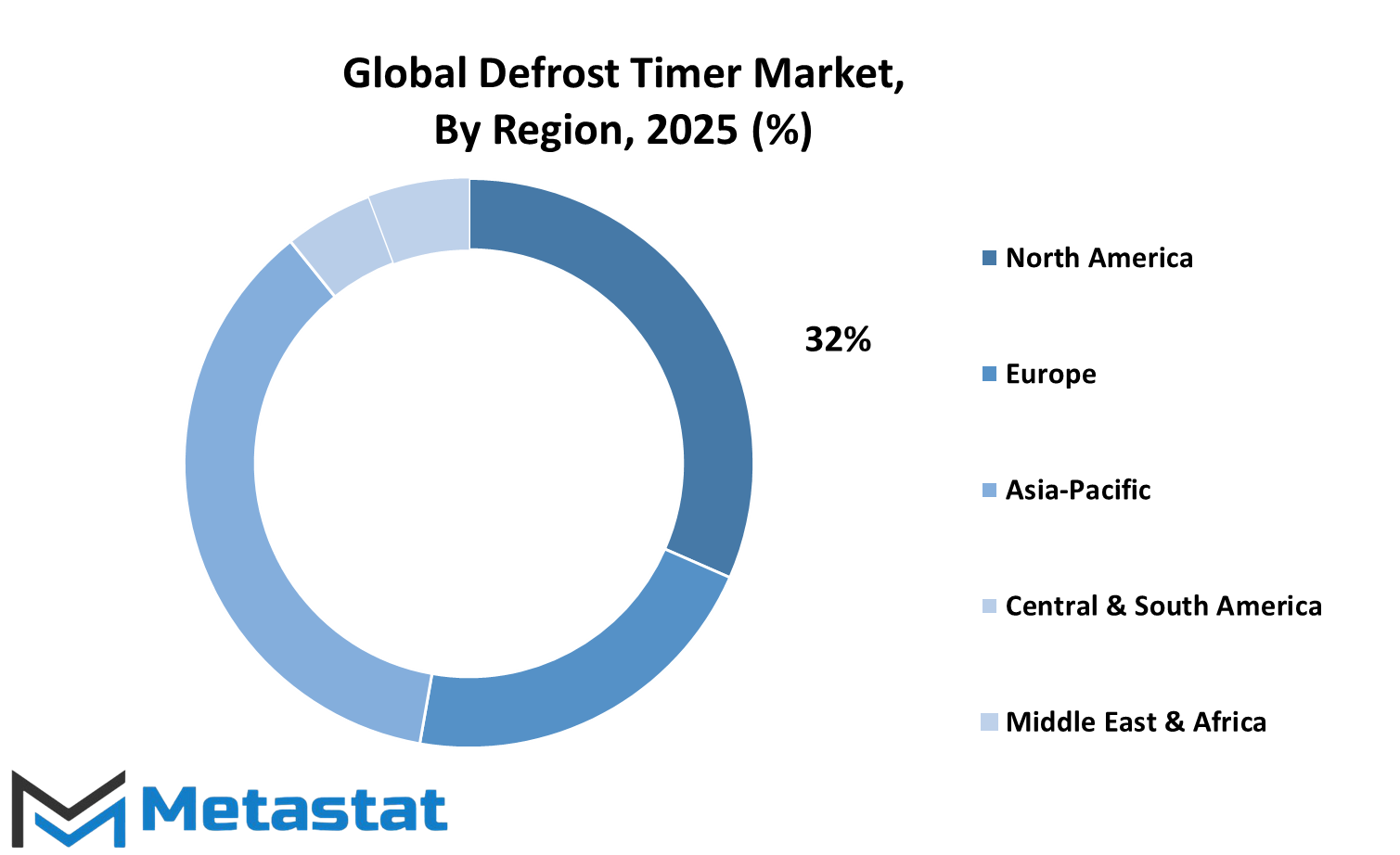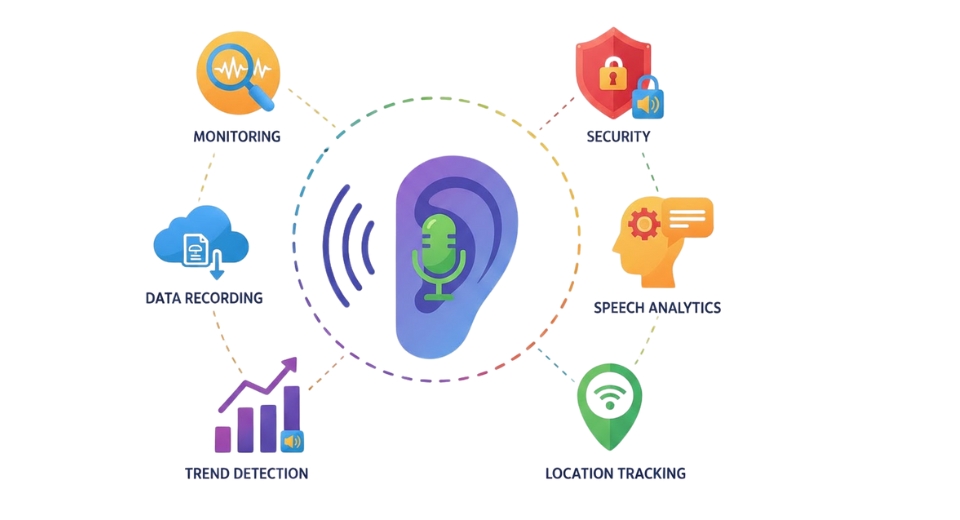MARKET OVERVIEW
The global defrost timer market report details how these timers, which function as otherwise unobtrusive components of larger systems, have become a basic component of cooling and refrigeration systems in industrial, commercial, and residential settings. As countries perfect their energy laws and as the lifecycles of equipment are more and more gauged by sustainability parameters, the function of defrost timers has assumed fresh perspectives in operating efficiency and strategy.
Refrigeration systems in different industries are being rethought not only in terms of their short-term functionality but also in terms of what they do over the long term. The equipment that regulates when and how often defrost cycles take place has an disproportionate influence in the efficiency of such systems. The worldwide need for more efficient, responsive, and resource-sensitive cooling devices has therefore promoted a revolution in the way defrost timers are designed, manufactured, and implemented. Production processes today trend towards customization and compatibility with high-level control systems, part of a larger movement to minimize energy use without sacrificing performance.
Increased sensitivity to energy management and system downtime has driven demand for timers that are no longer fixed devices but rather intelligent, programmatic tools. This change reflects alignment with the larger technological trajectory being taken by heating, ventilation, air conditioning, and refrigeration industries. These devices, previously governed by mechanical clock-like reasoning, are being gradually substituted or supplemented by digitally-enriched versions. Merging with intelligent grids and IoT-based systems is more than a trend; it's evolving as an inherent need for actors with the desire to observe and regulate refrigeration cycles in real-time.
Along with technological improvement, another developing trend that is shaping the global defrost timer market is driven by regional manufacturing approaches. With global trade frameworks responding to emerging economic configurations, nations formerly dependent on foreign imports are now turning inwards for alternatives. This has motivated indigenous producers to modify timers to suit the unique climatic and technical requirements of their respective indigenous markets. What results is a market defined not by uniformity but by tailored approaches a dynamic in which innovation is less about reinvention and more about precision and context.
Retail and logistics industries are especially impacted by the changing expectations surrounding these timers. The cold chain sector, which spans food preservation to pharmaceutical transport, relies heavily on uninterrupted refrigeration. In this scenario, the defrost timer is a guardian of dependability, keeping cooling devices in control of their thermal settings with minimal disruption. An untimely defrost period may lead to temperature shifts that adversely affect the quality of the product, and end-users turn to devices that can provide a greater level of precision and uniformity. That need has meant investment in timers that can adjust to changing workloads and environmental conditions.
One should not neglect the influence of aftermarket services in determining tastes in this market. Service providers increasingly promote components that are efficient but also easy to retrofit. The result has been an influence on design sensibilities, with producers now seeking to manufacture timers that are modular, robust, and easily workable by technicians. For most areas, particularly where refrigeration systems extend over vast or far-flung geographies, maintenance simplicity is as critical as the operation of the timer itself. As a result, the process of designing the product now takes into account lifecycle support as an unresolvable aspect compared to an afterthought.
Policy and compliance frameworks also shape the way in which the global defrost timer market evolves and adapts. Regulatory bodies, especially in developed countries, are tightening the ropes around allowed energy consumption and emissions production. The regulations indirectly call for re-tuning defrost timers since those elements determine the overall energy profile of refrigerators. In this context, innovation is not merely a question of aspiration but necessity informed by legislative requirements. This policy-product interplay is a key driver in influencing the direction of the market in the future.
It is also noteworthy to think about how the public's mood has started to make its mark in this industry. Although not necessarily a consumer-oriented product, the defrost timer has been indirectly impacted by the growing awareness of environmental issues among end-consumers. Brands that manage cold storage facilities or food retail outlets are being subjected to greater expectations of sustainability. Consequently, the requirements for the materials they employ including the timer are becoming more demanding. These companies increasingly demand data openness and energy performance data, compelling manufacturers to substantiate their designs through testing and certifications that are aligned with broader environmental objectives.
In reading again through Metastat Insight's exhaustive report, one sees not just a shifting market, but a sector becoming a pivot point in broader technological and environmental debates. From system dependability to energy stewardship, the roles of the unassuming defrost timer are being reappraised from various perspectives. It is an area where technology, regulatory structures, and customer expectations intersect in fascinating ways, each consideration pushing the market in subtle but quantifiable increments. Consequently, this report aims to not only detail the current position of the global defrost timer market but the shifting attitudes and needs that are likely to direct its future course.
Global defrost timer market is estimated to reach $2,388.17 Million by 2032; growing at a CAGR of 5.6% from 2025 to 2032.

GROWTH FACTORS
The global defrost timer market is expected to experience steady growth in the coming years due to advancements in automation and the increasing demand for efficient refrigeration systems. As the food industry expands and cold storage becomes more important across different sectors, the need for reliable defrost timers will continue to grow. These devices help maintain the performance and energy efficiency of refrigeration systems by automatically managing defrost cycles, which is especially valuable in commercial and industrial setups.
One of the key driving factors for the global defrost timer market is the rising demand for frozen and processed food worldwide. As more people turn to convenience-based lifestyles, there is a growing need for refrigeration systems that work efficiently and reduce energy waste. Another important factor is the growing use of HVAC systems in both residential and commercial buildings, where defrost timers help maintain smooth operation. The rise in global temperatures is also pushing industries and homeowners to use cooling systems more frequently, which adds to the market demand.
However, some challenges could slow down market growth. The cost of installing advanced defrost timer systems can be high, especially for small businesses and households. In addition, a lack of awareness about energy-saving tools and technology in developing regions may prevent wider adoption. These limitations can make it harder for the market to reach its full potential in certain areas.
Still, the future looks promising. Technological developments like smart defrost timers with remote access and control features are expected to open new doors for the market. As more companies invest in automation and energy efficiency, smart systems that offer better performance and lower maintenance costs will likely become more popular. These new products can bring greater value to both commercial and residential users, offering reliable solutions with long-term savings.
Governments around the world are also focusing more on reducing carbon footprints and promoting energy-efficient appliances. Supportive regulations and incentives for eco-friendly technologies can help boost the global defrost timer market by encouraging consumers and businesses to adopt advanced solutions. Collaborations between manufacturers and smart technology providers will likely drive innovation even further, shaping a future where systems are more connected and responsive.
In summary, while there are a few barriers to overcome, such as cost and limited awareness in some regions, the global defrost timer market has strong growth potential. Increased focus on energy efficiency, paired with ongoing innovations and broader applications, will play a major role in shaping the direction of the market in the future.
MARKET SEGMENTATION
By Type
The global defrost timer market is expected to grow steadily in the coming years as more industries and households rely on refrigeration systems for daily operations. These timers play an important role in managing the defrost cycle of appliances like refrigerators and freezers. They help improve energy efficiency and ensure longer equipment life. With the ongoing push for energy conservation and smart home solutions, the demand for reliable and automatic defrost systems is only going to increase.
In the future, the global defrost timer market will likely see advancements in design and technology that focus on better integration with digital systems. Manufacturers are expected to invest in smarter models that respond to temperature changes more precisely and reduce manual intervention. This shift will not only benefit commercial users but also provide added convenience for home use. Among the types available, the global defrost timer market is divided into Plug-in Defrost Timer and In-wall Defrost Timer. Each has its own use based on where and how it is installed. The Plug-in Defrost Timer is more flexible and can be used in a wide range of appliances without much effort. On the other hand, the In-wall Defrost Timer is suited for permanent and built-in setups where stability and compact design are important.
As technology continues to move forward, smart features will likely be added to both types of timers. This could include Wi-Fi connectivity, app-based control, and voice-activated features that allow users to manage settings more easily. These changes are expected to improve how defrost cycles are handled, saving power and extending the life of appliances. In addition, newer models will probably use stronger materials and better electronic parts to handle the growing need for more durable and efficient systems.
Industries such as food and beverage, pharmaceuticals, and cold storage will keep being major users of these products. Their need for stable cooling environments will drive further innovation in the global defrost timer market. As demand grows, competition will likely increase among companies, pushing them to offer better products at affordable prices. This could lead to more choices for consumers and faster improvements in product features.
In the years ahead, the global defrost timer market will not only expand in size but also in quality and function. With new technologies and rising demand from both homes and industries, these timers are set to become more advanced, efficient, and user-friendly.
By Application
The global defrost timer market is expected to see steady growth over the coming years as demand for efficient refrigeration continues to rise. These timers are essential in keeping freezers and refrigeration systems working properly by managing the timing of defrost cycles. As industries become more aware of the need for energy efficiency and equipment reliability, the importance of defrost timers will only grow. One of the key reasons for this is the global increase in food storage and preservation needs. From supermarkets to food processing plants, maintaining the right temperature is critical, and defrost timers play a major part in that process.
By application, the global defrost timer market is divided into commercial, industrial, and other segments. In commercial spaces such as grocery stores, restaurants, and cafes, defrost timers help refrigeration units run smoothly. They prevent frost buildup that could affect cooling performance and spoil stored goods. As more people turn to frozen foods and ready-made meals, the commercial sector will keep growing, creating more demand for reliable refrigeration and, by extension, for defrost timers.
In industrial settings, the demand for large-scale, energy-efficient refrigeration is pushing companies to upgrade their systems. Industrial food manufacturing plants, cold storage warehouses, and distribution centers need equipment that can function without interruption. A malfunctioning defrost cycle can result in wasted products and lost revenue. As automation and smart systems are increasingly used in these facilities, defrost timers will become more advanced. Some of them will likely be connected to broader monitoring systems, allowing remote control and alerts, reducing manual checks, and improving maintenance schedules.
The others category includes residential use and smaller-scale businesses. Although not as large as the commercial or industrial sectors, this area still plays a part in market growth. People are using more home appliances that rely on defrost timers, and in many places, energy-saving regulations will likely push manufacturers to design more efficient models. In the future, smart home technology may lead to more timers being linked to mobile apps or digital assistants.
As more countries set environmental targets, equipment that supports energy conservation will be favored. This includes products that help manage energy use better, like defrost timers. With continued innovation and the need for dependable cooling systems, the global defrost timer market is set to expand, with newer designs and applications shaping its future direction.
|
Forecast Period |
2025-2032 |
|
Market Size in 2025 |
$1,639.17 million |
|
Market Size by 2032 |
$2,388.17 Million |
|
Growth Rate from 2025 to 2032 |
5.6% |
|
Base Year |
2024 |
|
Regions Covered |
North America, Europe, Asia-Pacific Green, South America, Middle East & Africa |
REGIONAL ANALYSIS
The global defrost timer market is expected to grow steadily in the coming years, driven by increasing demand across multiple industries that rely on efficient cooling systems. As technology advances and energy efficiency becomes a key priority, defrost timers are being designed to offer smarter, more reliable performance. These timers play a critical role in appliances like refrigerators and freezers by managing the defrost cycle and ensuring consistent cooling without overuse of power. With growing concerns about electricity usage and environmental impact, more industries and consumers are choosing solutions that reduce waste while maintaining product quality. This shift is encouraging manufacturers to develop more advanced and cost-effective defrost timer models.
Looking at the global landscape, the global defrost timer market is divided based on geography into five main regions: North America, Europe, Asia-Pacific, South America, and the Middle East & Africa. Each region offers unique opportunities for growth depending on industrial needs, infrastructure, and consumer habits. North America includes the U.S., Canada, and Mexico. In this region, strong demand comes from both residential and commercial sectors due to wide usage of cooling appliances in homes, supermarkets, and industrial facilities. The U.S. leads the way in adopting new technology, making it a key area for ongoing product development and sales.
In Europe, which includes the UK, Germany, France, Italy, and other countries, the focus is on improving energy efficiency in everyday appliances. The European market values innovation and is supported by environmental regulations that push for more sustainable technologies. Asia-Pacific, which includes countries like China, India, Japan, and South Korea, is growing quickly due to rising urbanization and a booming middle class. Increased appliance ownership and the expansion of cold chain logistics in this region are boosting the need for better defrost timer systems. In South America, with Brazil and Argentina as leading countries, the use of cooling appliances is rising steadily. Growth is supported by a shift towards modern retail and food storage practices.
Meanwhile, the Middle East & Africa region, which includes nations like the GCC Countries, Egypt, and South Africa, is showing promising signs of development. As infrastructure improves and industries grow, demand for reliable and efficient defrost solutions will likely increase. Overall, the global defrost timer market will continue to grow as new technologies emerge and global demand for energy-saving appliances expands.

COMPETITIVE PLAYERS
The global defrost timer market is expected to witness notable shifts in the coming years, shaped by advancements in technology and changing consumer expectations. As the demand for energy-efficient and smart appliances increases, defrost timers are playing a more vital role in helping devices operate smoothly, saving power while keeping performance steady. These timers are commonly used in commercial refrigeration systems and household appliances to control the defrost cycle, preventing frost buildup and helping appliances last longer. Moving forward, industries and consumers alike will continue to look for timers that not only do their job well but also offer smart control features and improved reliability.
The companies competing in the global defrost timer market are investing in research and product development to offer innovative solutions that cater to both current and future needs. Danfoss and Schneider Electric are known for their engineering quality and broad product lines, often leading the way with efficient and durable solutions. Elitech Group focuses on digital and smart technology integration, which appeals to consumers looking for more modern features. Hoshizaki, a well-known name in commercial refrigeration, continues to push for products that meet high-performance standards. Intermatic and Omron Corporation offer timers that are built to last, helping businesses maintain operations without interruptions. Companies like Eaton Corporation and Robertshaw have been building their presence by offering dependable products that serve multiple sectors. Legrand and Supco focus on consistent performance and user-friendly features, while Selectron Industrial Company and Oribis bring regional expertise and tailored designs to the table. Theben, too, adds value by offering advanced timing solutions suited for specialized applications.
As digital technologies become more integrated into everyday equipment, there is a growing interest in defrost timers that connect to larger automation systems. This will likely lead to increased partnerships between timer manufacturers and smart technology providers. Features like remote monitoring, self-adjusting cycles based on usage, and predictive maintenance alerts could become standard. This shift will not only change how timers function but also how businesses and consumers interact with them. Over time, manual timers may fade out, replaced by units that can adjust themselves based on data input from sensors and connected networks.
Looking ahead, the global defrost timer market will continue to be shaped by the push for energy efficiency, smart control, and reliability. Competitive players will need to focus on innovation, adaptability, and strong service to remain relevant. As expectations grow and technologies change, those who respond with forward-thinking solutions will lead the way.
Defrost Timer Market Key Segments:
By Type
- Plug-in Defrost Timer
- In-wall Defrost Timer
By Application
- Commercial
- Industrial
- Others
Key Global Defrost Timer Industry Players
- Danfoss
- Elitech Group
- Hoshizaki
- Intermatic
- Legrand
- Omron corporation
- Eaton Corporation
- Oribis
- Robertshaw
- Schenider Electric
- Selectron Industrial Company
- Supco
- Theben
WHAT REPORT PROVIDES
- Full in-depth analysis of the parent Industry
- Important changes in market and its dynamics
- Segmentation details of the market
- Former, on-going, and projected market analysis in terms of volume and value
- Assessment of niche industry developments
- Market share analysis
- Key strategies of major players
- Emerging segments and regional growth potential








 US: +1 3023308252
US: +1 3023308252






